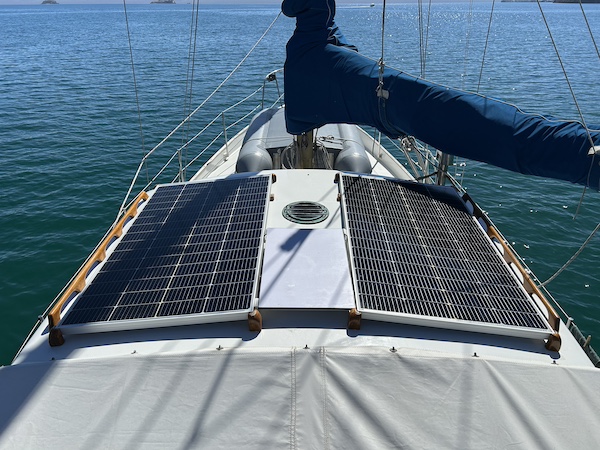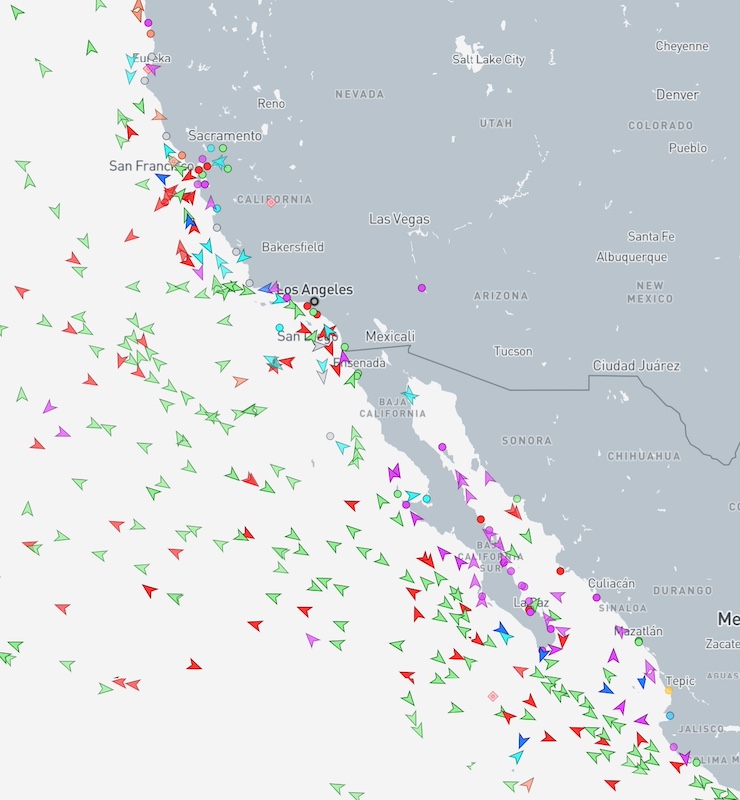
Cruising Then and Now — A Retrospective
Has cruising changed much over the years? Clark Beek thinks it has. Starlink, solar power and lithium batteries, AIS, and even stand up paddleboards have changed the way he and his family cruise.
Condesa sailed under the Golden Gate 17 years ago, after a 10-year circumnavigation. After my marrying Alison and our having Henry (age 12) and Lena (age 10), Condesa is finally back at it for a six-month family cruise around the Gulf of California. Cruising life is as wonderful as I remember it: the camaraderie, the adventure, the self-sufficiency — and a few technological developments in the intervening years that have made life aboard even better.
Starlink
Elon Musk’s polarizing behavior notwithstanding, Starlink has made communications aboard easy and straightforward. Every cruising boat in Mexico has it, at least every boat we’ve met. Email, Web, Facetime, or Zoom, free Wi-Fi calling, online school programs for the kids, banking, streaming movies, weather information, charting — all are available anytime, anywhere.
Early in our cruise I had to send a time-sensitive document to our bank via mail (problematic from Mexico) or fax (huh?). In the before-times, this would have required hours of frustration in a foreign city. With Starlink and a scan-to-fax app, I dealt with it in five minutes. The very article you are reading, and the photos that accompany it, were emailed to the editor of this magazine from a remote anchorage in Baja, all in about two seconds.

Starlink changes its user agreement almost weekly, and they seem to have trouble figuring out what to do with us cruisers who perhaps don’t fit their business model, but generally it’s trouble free. Most cruisers pay $165 to $250 per month, depending on the service plan (it’s cheaper if you buy your system in Mexico), and $300 to $500 for the hardware (depending on what incentives are on offer at the time). Starlink sucks up 6-10 amps at 12 volts, so we can’t leave it on all the time, and this is how we regulate screen time for the kids.
The sad corollary to Starlink’s takeover is that high-frequency radio has all but vanished. The thousands of dollars spent on radios, tuners, antennae, copper foil, ground planes, and HF modems have been traded for a simpler installation and monthly service fees. The morning radio nets have been replaced with social media forums, but there are cruiser Facebook groups, and NOFOREIGNLAND (www.noforeignland.com), a cruiser-specific social media app with a boat-tracking function. Good old VHF radio still provides real-time voice contact, and there are morning VHF nets in the more popular anchorages. Likewise, instead of checking the barometer and downloading the latest weather fax, we now use apps such as PredictWind and Windy.

